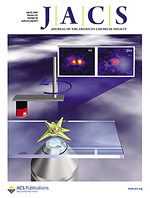Twinkling Nanostar Biomedical Imaging Research
2009-11-20
 Professor Alex Wei and his team have created magnetically responsive gold nanostars that may offer a new approach to biomedical imaging. The nanostars gyrate when exposed to a rotating magnetic field and can scatter light to produce a pulsating or "twinkling" effect. This twinkling allows them to stand out more clearly from noisy backgrounds like those found in biological tissue.
Professor Alex Wei and his team have created magnetically responsive gold nanostars that may offer a new approach to biomedical imaging. The nanostars gyrate when exposed to a rotating magnetic field and can scatter light to produce a pulsating or "twinkling" effect. This twinkling allows them to stand out more clearly from noisy backgrounds like those found in biological tissue.
"This is a very different approach to enhancing contrast in optical imaging," said Wei, who also is a member of the Purdue University Center for Cancer Research and the Oncological Sciences Center. "Brighter isn't necessarily better for imaging; the real issue is background noise, and you can't always overcome this simply by creating brighter particles. With gyromagnetic imaging we can zero in on the nanostars by increasing signal strength while cutting down on background noise."
Related links:
Wei Research Group

Alexander Wei
Professor
Organic Chemistry